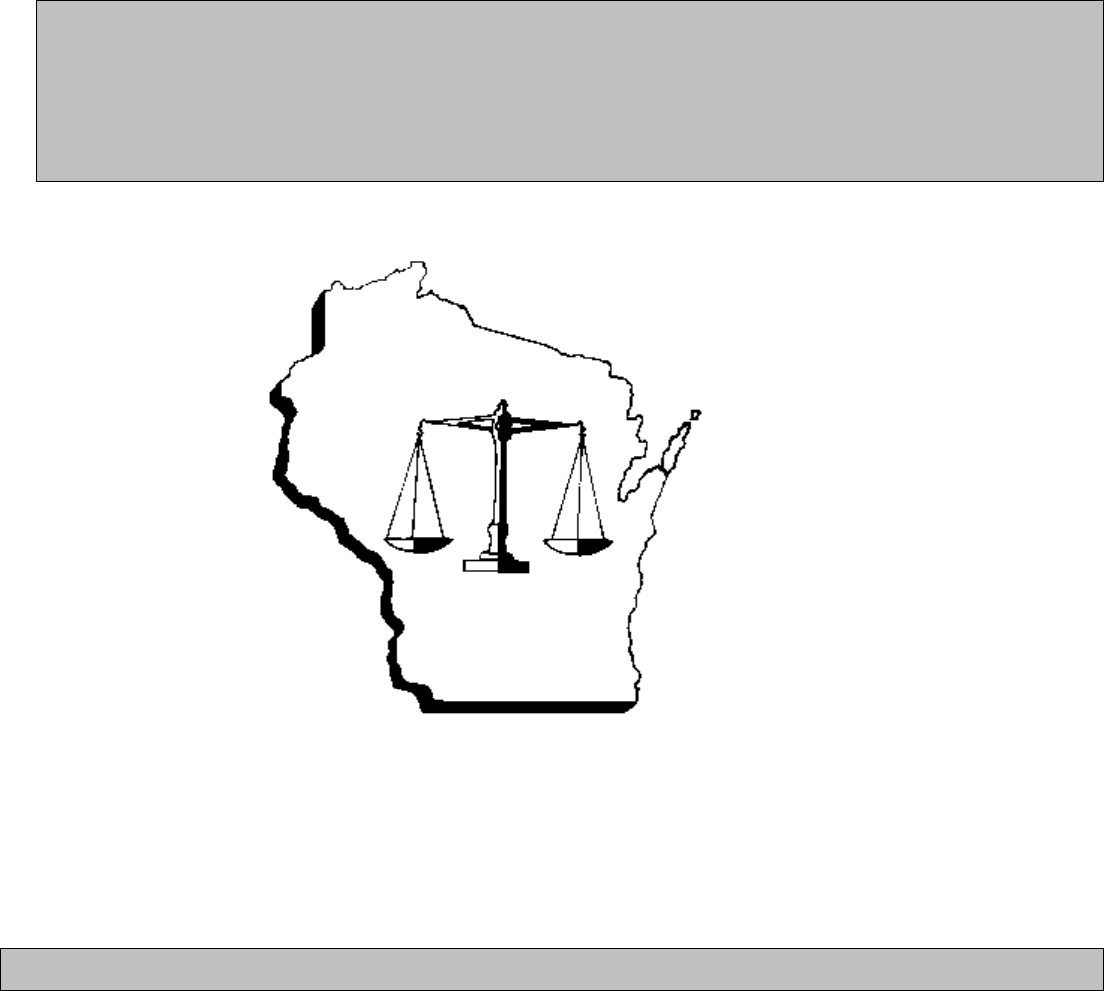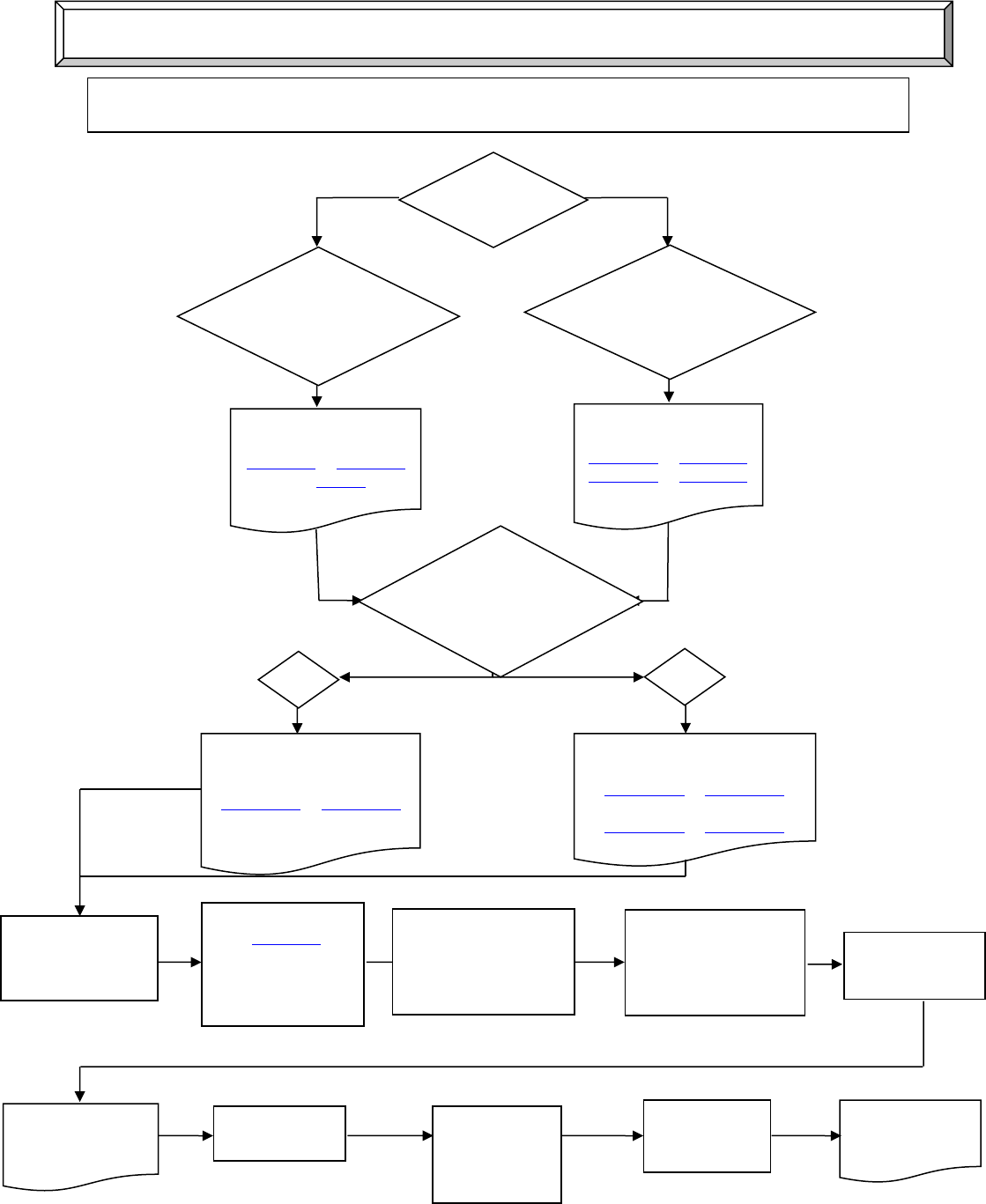
FA-4100V, 02/23 Basic Guide to Divorce/Legal Separation Page 1 of 6
Basic Guide to Divorce/Legal Separation
Table of Contents
1. Basic Steps for Getting a Divorce or Legal Separation
2. Important Court Related Offices and Services
3. Legal Issues to Consider
4. County Checklist

FA-4100V, 02/23 Basic Guide to Divorce/Legal Separation Page 2 of 6
10 Basic Steps for Getting a Divorce or Legal Separation
Even though each county may do things a little differently, or call various hearings by different names, there is a basic
structure to how a divorce or legal separation will proceed in Wisconsin.
1. Decide How You Will File. You need to decide if you and your spouse will be signing the Petition together (filing
jointly) (FA-4110V with Minor Children or FA-4111V without Minor Children)or if only one of you will be completing the forms to
start the action (filing alone) (FA-4108V with Minor Children or FA-4109V without Minor Children).
2. Decide If You Need a Temporary Hearing. You may request a temporary hearing before the Family Court
Commissioner by completing an Order to Show Cause and Affidavit for Temporary Order (FA-4128VB & FA-4128VA with
Minor Children or FA-4129VB & FA-4129VA without Minor Children) if you and your spouse cannot agree on any of the following
issues:
Child Custody Use of automobiles or other personal property
Child Placement Payment of bills
Child Support Payment of maintenance or spousal support
Use of the family residence
3. File the Action. The summons and petition (or joint petition) for divorce or legal separation and confidential petition
addendum must be filed and a fee paid to the Clerk of Circuit Court. (Note: There is a mandatory 120-day waiting
period before the court can hear the final hearing.)
4. Deliver (or serve) copies of the documents to those who must receive them. In order for the court to hear the
case, your spouse must be provided with copies of the summons, petition, confidential petition addendum, and
proposed parenting plan. Proof of that service must be filed with the Clerk of Circuit Court.
5. Obtain a Temporary Order (if needed).
If you completed the Order to Show Cause and Affidavit for Temporary Order (see #2) you must attend the Temporary
Hearing you requested to have a temporary order issued.
If you and your spouse reach an agreement, you can complete and file a Stipulation for Temporary Order (FA-4126VA
& FA-4126VB with Minor Children or FA-4127VA & FA-4127VB without Minor Children).
If you and your spouse don't believe it is necessary to have a formal temporary order, you may ignore this step
at this time. If the situation changes before the final hearing, either spouse may seek a temporary order.
6. If there are minor children, complete any required parenting programs.
If you do not reach an agreement in mediation, you must file a proposed parenting plan (FA-4147V) within 60
days of finishing mediation or as ordered by the court.
7. Obtain a date and time for the next hearing. In some counties the court automatically schedules the next hearing.
In other counties you may have to contact the court to schedule the next hearing. This next hearing, depending on
the county, may be the final hearing.
8. Complete your paperwork for the final hearing:
a. Marital Settlement (FA-4150 with Minor Children or FA-4151V without Minor Children)
b. Financial Disclosure Statements (FA-4139V)
c. Findings of Fact, Conclusions of Law, and Judgment of Divorce (FA-4160VA with Minor Children or
FA-4161VA without Minor Children)
d. Vital Statistics Form (from the Clerk of Circuit Court office)
e. Any other forms required by the Court
9. Attend your final hearing. Arrive early, be prepared, bring your paperwork, and be polite.
10. Complete any other documents required after the final hearing. Sign car titles and real estate deeds; complete
documents to divide pension plans (QDRO); change beneficiaries on life insurance policies; revise your will, and
other matters when appropriate.

FA-4100V, 02/23 Basic Guide to Divorce/Legal Separation Page 3 of 6
This flow chart gives a general outline of divorce proceedings in Wisconsin. The procedures in every
county are a little bit different. Please refer to the procedural checklist section of this guide.
BASIC STEPS FOR GETTING A DIVORCE/LEGAL SEPARATION
Complete the Joint
Petition form
FA-4110V or FA-4111V
and GF-179
Decide
how
you will
Complete the Summons
and Petition forms
FA-4104V or FA-4105V
FA-4108V or FA-4109V
and GF-179
Y
es
N
o
Complete Order to Show
Cause and Affidavit for
Temporary Order
FA-4128VA & FA-4128VB
or
FA-4129VA & FA-4129VB
Complete
Stipulation for Temporary
Order
FA-4126VA & FA-4126VB
or
FA-4127VA & FA-4127VB
File the documents
and pay the filing
fee to the Clerk of
the Circuit Court
Complete service
(see FA-5000V for
deadlines and
procedures). Attend
temporary hearing, if
necessary
If there are minor
children, complete any
required parenting
programs and file any
required documents
Obtain a date and
time for the next
court hearing
Complete your
paperwork for the
final court hearing
Attend your
final hearing
Court approves
Marital
Settlement
Divorce/Legal
Separation
Granted
Complete any
other documents
required
You or your
spouse will be
filing alone
You and your
spouse will sign
the petition
together
Decide if you need a
Temporary hearing
A 120-day waiting
period is required

FA-4100V, 02/23 Basic Guide to Divorce/Legal Separation Page 4 of 6
Legal Issues to Consider
Self-Representation (Pro Se)
Pro Se means to represent yourself in court without an attorney. There are significant risks and responsibilities to doing so.
You should explore the risks and determine if you can fulfill the responsibilities required. Your case may be too complex to
handle on your own. Sometimes when people represent themselves, they have to hire an attorney to "fix" their mistakes. It
may cost more to hire an attorney to "fix" the mistake than it would to have hired the attorney to handle it from the beginning.
Court staff cannot give legal advice to you. Court staff can provide general information about court rules, procedures,
practices, and terms.
Jurisdiction: Where should you file?
Divorces and legal separations are filed in the county you currently reside, not where you were married.
To file for divorce in a County in Wisconsin, at least one of the parties must:
Be a resident of the State of Wisconsin for at least 6 months immediately before the date the action is filed, and
Be a resident of the County in which you are filing for divorce for at least the 30 days immediately before the
date the action is filed.
To file for legal separation in a County in Wisconsin, at least one of the parties must:
Be a resident of the State of Wisconsin for at least the 30 days immediately before the date the action is filed,
and
Be a resident of the County in which you are filing for legal separation for at least the 30 days immediately
before the date the action is filed.
Divorce, Legal Separation, or Annulment?
Divorce
Divorce ends a marriage. The court rules on such issues as the division of property, maintenance (spousal support), and if
necessary, arrangements for child support, legal custody, and physical placement. There is a 120-day waiting period to get
divorced. Once the divorce is granted, the parties cannot remarry anywhere in the world for at least six months.
Spouses do not have to give reasons for wanting a divorce. Wisconsin is a "no fault" divorce state, which means neither
spouse must prove that the other has done anything wrong, and only one spouse must testify under oath that he or she
believes that the marriage is irretrievably broken. A marriage is irretrievably broken when there is no chance for
reconciliation.
Legal Separation
Legal separation does not end a marriage. The court rules on the same issues as for divorce. The forms, instructions,
procedural information, and waiting period (120 days) for obtaining a legal separation are also the same as those for divorce.
Spouses are free to reconcile at any time. Spouses cannot marry another person while they are legally separated. If the
spouses agree, they may convert the legal separation to a divorce at any time. If they do not agree, either spouse may
convert the legal separation into a divorce by filing a motion to do so after one year from the date the legal separation was
granted. The parties may not remarry anywhere in the world for at least six months from the day the legal separation is
converted to a divorce.
Spouses do have to give a reason why they are requesting a legal separation and not a divorce. Both of the spouses will
have to give testimony under oath that the marital relationship is broken.

FA-4100V, 02/23 Basic Guide to Divorce/Legal Separation Page 5 of 6
Annulment
An annulment is a court procedure that declares that a marriage never existed. However, a court may annul a marriage only
under limited circumstances. A short term marriage IS NOT a legal reason for annulment. See Wisconsin Statute 767.313
for the acceptable reasons to request an annulment. The forms, instructions, and procedural information provided by the
Wisconsin Court System are not designed to be used to request an annulment. You should seek legal assistance if you
feel you qualify and would like to file an annulment.
Other Issues To Consider
Legal Custody
Legal custody refers to the major decision-making authority for a minor child, including but not limited to decisions regarding
consent to marry, enter military service, obtain a driver's license, authorization for non-emergency healthcare and choice of
school and religion. Wisconsin law presumes that it is in the best interest of the minor child that the parents be granted joint
legal custody. Joint legal custody means that neither parent's legal custody rights are superior, except as ordered by the
court or agreed to by the parents. A court may find that awarding joint legal custody would be harmful to the minor child and
order sole legal custody to one parent.
Physical Placement (visitation)
Physical placement refers to the right to have a minor child physically placed with a parent. It gives that parent the right and
responsibility to make, during that placement, routine daily decisions regarding the child's care. One parent may be awarded
physical placement with the other parent having periods of physical placement (visitation), or the parents may be awarded
shared physical placement. If either parent is awarded less than 25% placement, specific reasons must be given explaining
why more placement with that parent is not in the child’s best interest.
Mediation
It is recommended that the parents come to an agreement as to the legal custody and physical placement of their children.
If they cannot, and a dispute arises, the court will order that the parents attend a mediation session. Parents must submit
parenting plans (FA-4147V) to the mediator 10 days before the initial mediation session. If the parents are still unable to
come to an agreement, the court may make other orders, including the appointment of an attorney to represent the interests
of a minor child (Guardian ad Litem), and the filing of a Proposed Parenting Plan with the court. In making a final decision
on legal custody or physical placement, the court will consider all factors related to the best interest of the child, including
those listed in WI Statute 767.41, which is available at the following website:
https://docs.legis.wisconsin.gov/statutes/statutes/767/v/41
Personal Safety Issues
If your case involves minor children, and you have serious reason to believe that your health, safety, or liberty or that of a
minor child would be jeopardized by the disclosure of certain identifying information both in paper and electronic records,
you may request that identifying information be sealed from the public or the other party until a hearing is held. Once you
have completed the forms (GF-177 and GF-178), the court will schedule a hearing. At that hearing you will have to convince
the judge that it is in the interest of justice for the information to continue to be sealed.
Child Support
The court may order either or both parents to pay child support for a child who is:
Under the age of 18, or
Age 18, but less than 19 and pursuing an accredited course of instruction leading to a high school diploma or its
equivalent.
Payments for child support are generally intended to include basic support costs including food, shelter, clothing,
transportation, personal care, and incidental recreational costs. Under a shared placement circumstance, parents may also
be required to pay variable costs (reasonable expenses above basic support costs) in addition to child support, including
child care, tuition, a child's special needs, or other activities that involve substantial cost.
Child support is calculated based upon the percentage standard guidelines established by the State of Wisconsin
Department of Children and Families (DCF). Not every family situation is the same, so the approach that applies to a
specific situation may be somewhat different from the guidelines. The court may order an alternative that is greater or

FA-4100V, 02/23 Basic Guide to Divorce/Legal Separation Page 6 of 6
less than the guidelines if the use of the guidelines is unfair to one of the parents or children based on the circumstances,
including but not limited to shared-placement, split-placement, low-income, high- income, or serial-family payer
circumstances. The child support standard guidelines are based on “gross” (pre-tax) income of the payer or both parties,
and the number of children they have in common. The designated percentage amounts are:
17% for one child
25% for two children
29% for three children
31% for four children
34% for five children
Maintenance (Spousal Support)
A spouse seeking support from the other spouse may request maintenance in the divorce or legal separation. The court
may order maintenance for a limited or indefinite length of time. When considering whether to award maintenance, the court
will look at all of the circumstances of the parties, including but not limited to, the factors listed in WI Statute 767.56. This
statute is available at the following website: https://docs.legis.wisconsin.gov/statutes/statutes/767/vi/56
Property Division
Wisconsin presumes that all property, other than property that a party receives as a gift or through inheritance, will be
divided equally (after considering all debts). To achieve an equal division of property, the judge may award property to one
party and a cash payment to the other party. The judge may divide property unequally after considering the factors described
in WI Statute 767.61, which is available at the following website:
https://docs.legis.wisconsin.gov/statutes/statutes/767/vii/61
If the spouses agree on how to divide all their property, they must provide a description of which spouse will receive which
property. This also applies to the property that may have already been divided. If the spouses have already divided the
property, or it is only in one spouse's name, they must still tell the court which spouse will get what property and
the value of that property.
Debts and Obligations
The spouses must disclose all debts, regardless of who they believe will be responsible for them. The judge will
determine which spouse is responsible to pay the debts and other obligations after considering any agreements between
the parties. Even if the judge orders one spouse to pay certain debts after divorce/legal separation, creditors are not bound
by the court order established in Family Court and may seek payment from the other party if the party ordered to make the
payments doesn't pay or files for bankruptcy. If this occurs, the party may request relief from the Family Court, but only if a
specific order was established for payment of the debt or obligation.
